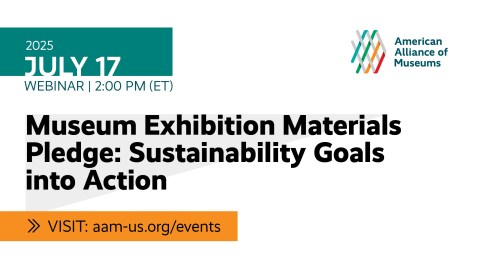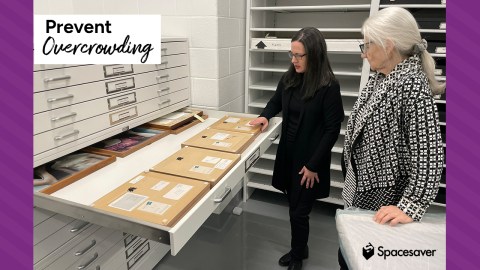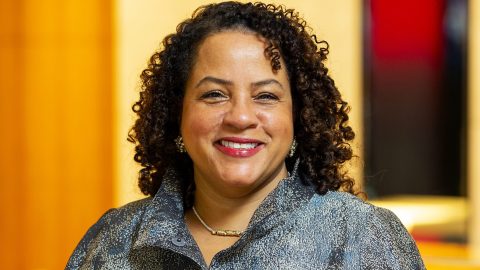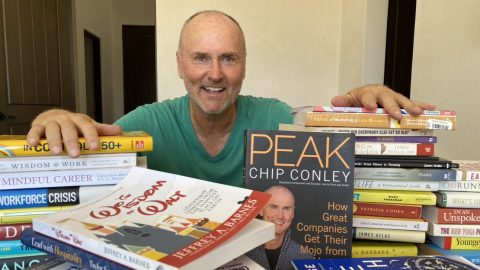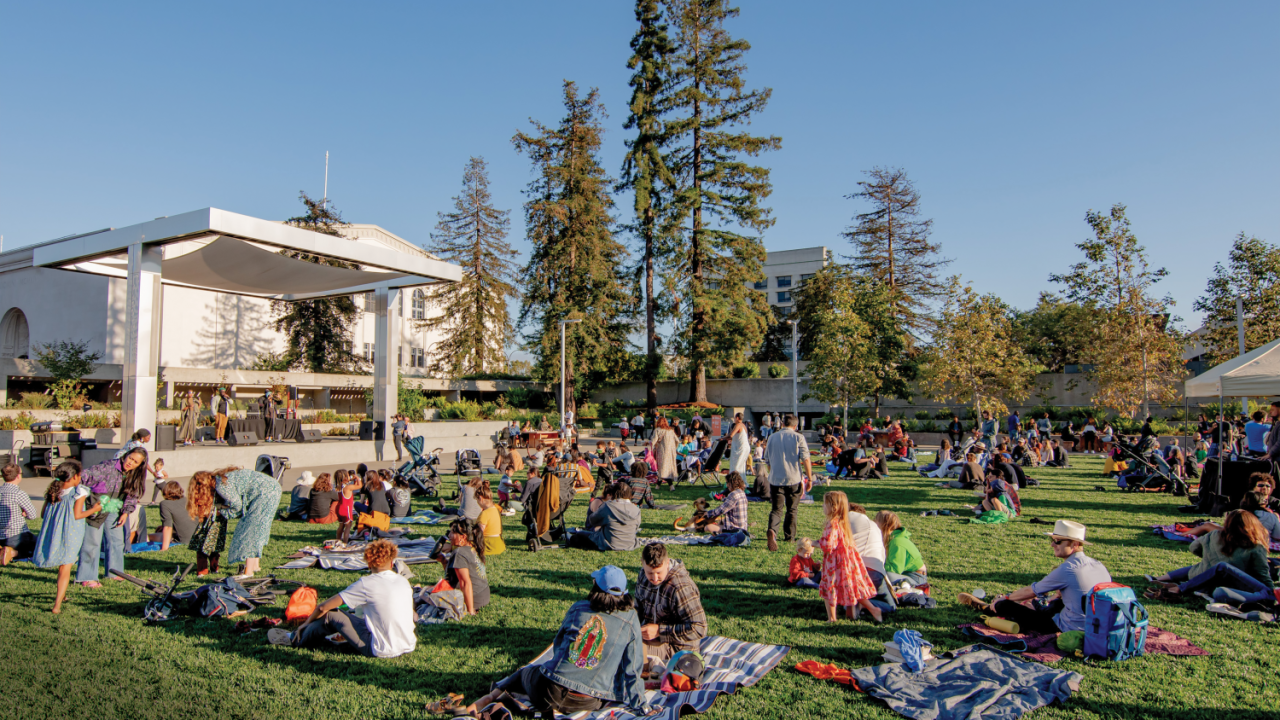
The Oakland Museum of California has changed its financial decision-making to prioritize social cohesion.
This article originally appeared in Museum magazine’s May/June 2024 issue, a benefit of AAM membership.
During a strategic planning retreat in 2023, an Oakland Museum of California (OMCA) trustee raised a hand to offer what they thought was missing from the draft mission, vision, values, and goal statements in OMCA’s in-progress strategic plan: “financial sustainability,” they said confidently. They explained that the museum’s new and inspiring direction wasn’t complete if we didn’t explicitly state that we had the money to pay for it.
The concept of financial sustainability as a goal for nonprofits is so ingrained that it sounds like common sense. Organizations need recurring and reliable money to do their mission-related work over the long term.
But over the years, as we listened to staff perspectives on anti-racist practices and analyzed our failures, we began to suspect that our instinct to prioritize our financial sustainability was exhausting our resources without achieving the intended social impact. And as we lived through the tumult of the early 2020s, we wondered: Was the “sustainability” part of financial sustainability even possible in a world where accelerating change is one of our only constants? Had the words “financial sustainability” become, as one staff member observed, weaponized as an easy “no” to ideas leadership didn’t want to engage with?
Inspired by our museum’s clear social cohesion goals, we began to ask: What would shift if we embraced our finances as connective tissue that drives social change across sectors and communities rather than as scarce resources to be balanced? What if we aimed beyond financial sustainability toward making financial decisions that were aligned with our values?
The new strategic plan would have to answer these questions, and we would need to significantly change our business plan. To do this, we needed to clearly articulate why we needed something other than financial sustainability as our guiding financial ethos. We would also need the board and staff to help us imagine how we could do this.
Healthy Systems and Liberation
Our strategic planning consulting team, the Colibrí Collaborative, suggested that we begin our planning process by listening to the community to better understand the desired future role for our museum along with perceptions of our current role. What we heard redirected our focus from defining ways our museum could be a leader toward embracing the critical behind-the-scenes role the museum plays in Oakland, the Bay Area, and California’s network of cultural institutions. Our role as a critical social network, we heard, keeps our community members connected in divided times. We heard that OMCA is more than a museum. Community members told us they valued our garden as a public space to gather, and the museum’s exhibitions and programs provide needed context and place for public dialogue.
With this feedback, the direction of OMCA’s new financial ethos crystalized: prioritize our resources so that we can be a strong pillar in our community network and invest in fortifying the network’s health. By focusing on our role inside of a healthy system, we were learning to practice liberation as defined by the Colibrí Collaborative: the ongoing process of accepting and appreciating everyone and everything around us, recognizing and acting in accordance with our individual gifts, valuing how we are each sacred, and honoring our kinship.
Learning from Our Past
The most obvious observations in hindsight are often the hardest to see clearly in the thick of things. Addressing declining city funding using data-driven decision-making to increase other revenue sources was a major initiative in our previous strategic plan—a pretty standard strategy in the museum world. But when the pandemic gave us a chance to step back and see—specifically through the eyes of our anti-racist design teams—where putting financial sustainability on par with our social impact had landed us, we noticed a pattern of financial decision-making that was uplifting our economic independence but undermining our social impact goals and values:
We were prioritizing our organization’s financial health over our staff’s financial health. We were paying staff at 90 percent of market value compared to similar roles at similarly sized museums in our geographic area because that was what we felt we could afford. In the name of preserving funds to create social cohesion in our communities, we were expecting our staff—themselves members of those communities—to work at a discount.
We were prioritizing increasing revenue over providing economically sensitive access to our museum. Our strategies to grow ticket and program revenues included decisions to eliminate or deemphasize discounted or free admission options.
At our signature fundraising event, we were effectively offering priority access to those who could compensate us for that access. We celebrated our social impact work as a museum at an event whose audience received favorable accommodations tied to the increased amounts they paid for them.
We were prioritizing our portfolio’s return on investment over being mindful of our investment choices for our community. Although we know that social cohesion is undermined by activities promoting firearms; the prison industrial complex; incarceration; and the exploration, production, and extraction of fossil fuels, we focused on what an investment returned financially rather than what it enabled socially.

These actions were firmly grounded in putting our financial sustainability on par with our social impact—but they also had us acting in direct conflict with our stated values and as if OMCA was the only entity whose economics mattered. So we experimented with flipping the equation. What would happen if we made financial decisions using our values, vision, mission, and social impact framework to help us achieve our intended social cohesion outcomes?
- We started paying our staff at 100 percent of market value and committed to annual increases at least in line with annual cost of living increases. After making this commitment, we asked a donor to support the first three years of this new compensation philosophy, allowing us time to find more donors inspired to support our commitment to our staff’s financial wellbeing.
- We shifted our focus to attendance rather than revenue. Practically, this means that every visitor to our campus, ticketed or unticketed, full price or discounted, is as valuable as any other visitor. This perspective on visitors is critical to achieving our social impact.
- We prioritized access. OMCA’s signature fundraising event is now priced on a sliding scale and includes a free option, democratizing event attendance. Now we can focus on people we can serve rather than only being accessible to those who can pay. Our data analysis indicates this decision has not decreased revenue.
- We redefined our investment portfolio’s purposes and priorities to be a “both/and” with respect to return on investment and fostering social cohesion. We do not expect our portfolio to reach alignment with our new priorities quickly. We recognize that this process is best done slowly, methodically, and with great intention. We are confident that seeing our investment portfolio as more than a vehicle for our own benefit will positively affect the community.
We learned that when we grounded financial decision-making in our most sacred values, we emerged stronger. And when we used our resources to strengthen our network and connection with the community, we were able to fund those commitments through a passionate community of supporters who share our values.
Through our work with the Colibrí Collaborative, we now see that with these changes, we are invoking a liberatory perspective, inspired by the Indigenous principle of abundance from interconnectedness and reciprocity rather than through scarcity, competition, and individualism. We also see parallels to our ethos in the work of climate justice. When the network is healthy, we all can have what we need.
Reaching Financial Authenticity
Our board, like most, takes its fiduciary and governance roles seriously. OMCA has run deficit budgets in both pre- and post-COVID years. Our trustees’ concerns about our ability to close those deficits are real. How could we help them become comfortable with what seemed like a leap of faith: invest in the health of the ecosystem and somehow, some way, that ecosystem will reap bigger rewards for all of its components the healthier it gets?
After the board retreat where financial sustainability as a goal was noted as missing, OMCA worked with the Colibrí Collaborative and our strategic planning financial consultants, BDO FMA, to make the change process around financial decision-making more explicit and transparent. Collectively, we defined the term “financial sustainability” to name a decision-making ethos driven by the need for a financially stable institution for the long term.

We differentiate this from “financial integrity,” an alternative financial decision-making ethos in which our financial decisions are primarily driven by how we embody our mission, vision, and values, and how we uplift our people and our existing strengths. We have explicitly stated that financial integrity is the lens through which we want to re-envision our business plan to support our new strategic plan.
We also defined an aspirational state beyond financial integrity that we call “financial authenticity,” in which our financial decisions will be primarily driven by how our organizational strengths lead to collective actions that contribute to a greater good. The continuum from financial sustainability to financial integrity to financial authenticity is parallel to the continuum of independence to interdependence to collectivism.
Once we provided these definitions and walked trustees through how decision-making based on financial sustainability had led to misalignment with our organizational values and social impact goals, as originally observed by our anti-racist design teams, we began to see heads nod. We gathered feedback that endorsed a business model centered on inviting more people in rather than extracting their dollars. We agreed that contributed revenue from donors who value that business model is a critical piece of OMCA’s financial puzzle. Together, we reached an understanding that organizational financial health is always a baseline expectation and, simultaneously, that we will evolve to embrace financial sustainability as a consequence rather than a driver of wellbeing at OMCA and in our interconnected communities.
Looking Back, Looking Forward
The evolution of thinking described here occurred organically over more than five years. Many brilliant people contributed to initiatives driven by an emphasis on financial sustainability; they were doing what they were asked to do at the time, and they were doing it well. The path that led us away from those initiatives was paved in part by their ideas and energy and, especially and oddly enough, their successes.
Today, we are on a learning journey toward living our values, be it through financial or other types of decision-making. We don’t claim to have it figured out. As an example, currently, our staff and leadership are grappling with how we claim to embody our values and social impact framework externally and how we choose to live them internally in the context of a public statement about Palestine.
Such healthy discussions and differences in perspective will continue both internally and externally. This is what happens when an organization uses inquiry, transparency, and vulnerability as fuel for progress toward social cohesion. The liberatory financial ethos continuum we’ve described as an outcome of our work is only one step on this long journey.
Resources
Towards Liberation: A Guide for Reconnecting with a Culture of Liberation, Colibrí Collaborative colibricollaborative.com/towards-liberation
Diedra Barber and Maureen Benson, Transmuting White Supremacy and Patriarchy
transmutingwhitesupremacyandpatriarchy.com
Anne Wallestad, “The Four Principles of Purpose-Driven Board Leadership,” Stanford Social Innovation Review, 2021
ssir.org/articles/entry/the_four_principles_of_purpose_driven_board_leadership#
Gabes Torres, “Reclaiming Abundance Under Capitalism,” YES! magazine, Oct. 26, 2022
yesmagazine.org/opinion/2022/10/26/capitalism-consumption-holidays-abundance
